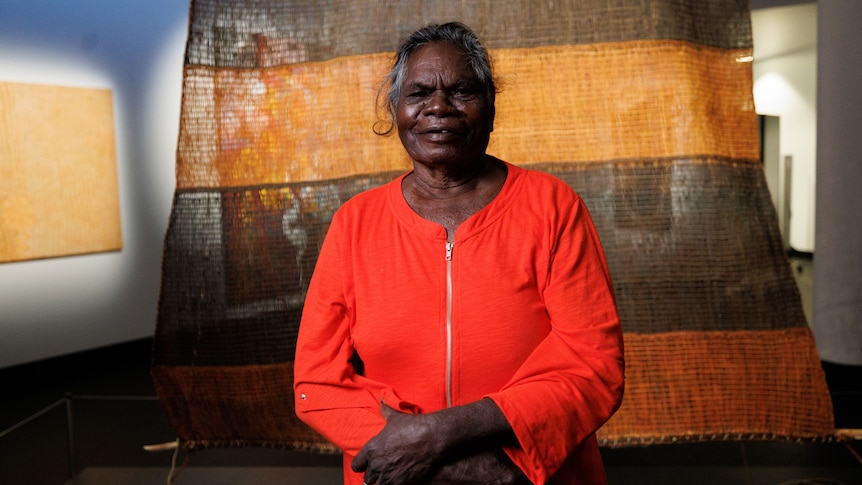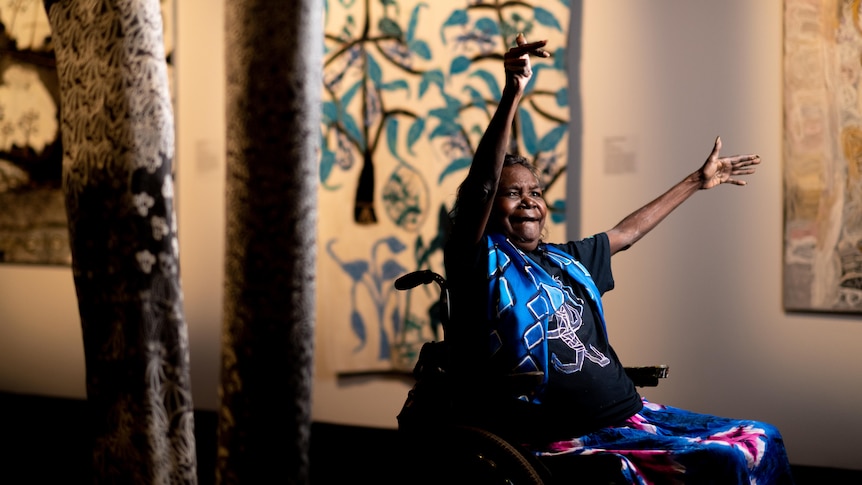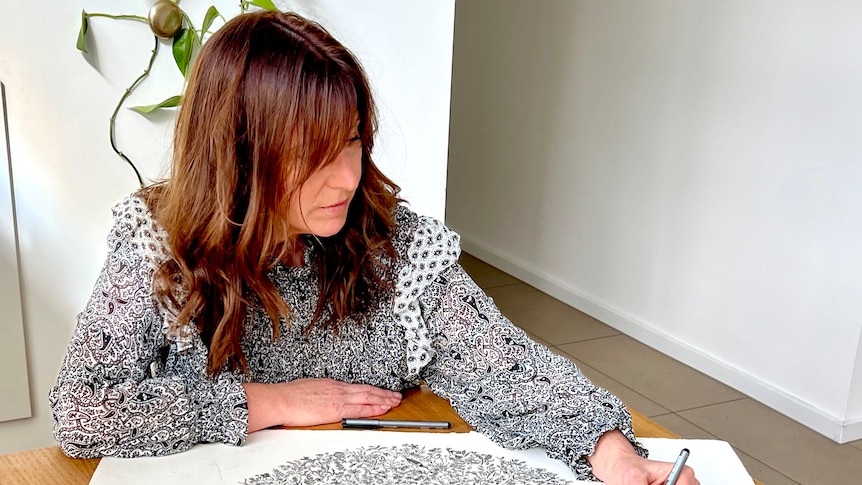A sweeping, large-scale woven sail, once used on fishing boats between Arnhem Land and Indonesia prior to colonization, has won first prize in the prestigious National Aboriginal and Torres Strait Islander Art Awards.
Six other artists have won category prizes including bark painting and multi-media works, picked from 63 finalists from over 200 entries.
This year the NATSIAA’s became the richest art award in the country, with $190,000 in the overall prize pool and a doubling of the top prize to $100,000.
These are the winners.
Telstra Art Award
The major prize this year went to senior Yolngu artist Margaret Rarru Garrawurra for Dhomala (pandanus sail).
Ms Garrawurra, who lives in Milingimbi in north east Arnhem Land, recreated the type of sail used on Macassan fishing by boats, which came to trade with Yolngu in north east Arnhem Land prior to colonisation.
The weaving style used in the piece was taught to her by her father, who was taught by his father.
The work features the rich black plant dye Ms Garrawurra has become renowned for, which she gathers and prepares herself.
Friend and sister Helen Ganalmirriwuy, who helped interpret for Ms Garrawurra, said that of all the mediums her sister works in, weaving is “her favorite in her heart”.
General Painting Award
Indulkana artist Betty Muffler won the General Painting Award with a piece titled Ngangkari Ngura (Healing Country).
Bark Painting Award
The Bark Painting Award this year recognized a work titled Yunupingu (the rock) by D Yunupingu from Yirrkala, who died in 2021.
Works on Paper Award
Larrakia man Gary Lee, from Garramilla/Darwin, won the Works on Paper Award with a pastel, pencil and digital print work titled Nagi.
Wadjuk Marika Memorial 3D Award
A joint work by Bonnie Burangarra and Freda Ali Wayartja from Yilan in the Northern Territory won this year’s Wandjuk Marika Memorial 3D Award. The work is titled An-gujechiya.
Multimedia Award
A video work by Jimmy John Thaiday from Erub in the Torres Strait,titled Beyond the Lineswon this year’s Multimedia Award.
Emerging Artist Award
The Emerging Artist Award, given to an artist in the first five years in their practice, this year went to Louise Malarvie from Kununurra, for a work titled Pamar Yara.
.


